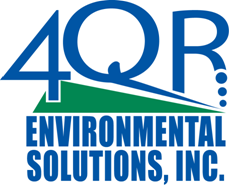The end of the year is here and many organizations are scheduling their "walk around" audits. Whether your focus is environmental or safety, or a combination of the two, this inspection is a part of your environmental, safety, and health (ES&H) program. The "walk around" audit is a visual approach to determine if the organization's policies and procedures are being properly implemented, verify the company is in compliance with ES&H laws, and identify what improvements or areas of concern need attention.
Before you begin your audit, here are a few tips to consider so that you can get the most of your "walk around" audit:
- Know the goals and objectives of your audit. Review your ES&H program to determine the policy and procedure for performing the audit and evaluate what standard for auditing you are using. Knowing what regulations apply to your organization with access to those regulations is a minimum, but your organization may have recommended goals that are more stringent than the regulatory guidelines. Standards such as ISO, ASTM, and NIOSH are recommendations that your organization may have incorporated into their program. Your organization might also have Best Practices to help build and reinforce your ES&H culture.
- Communicate with your safety team. Having your auditing team on board with your vision for this audit is extremely important. Clearly define the goals and objectives for the team and make sure everyone on your team knows what they will be responsible for, what procedures they are to follow, and how much time they have to complete the audit and reporting of results.
- Keep your scope, budget, and deadline reasonable. You want to have a team large enough, capable, and available to complete the audit in a timely manner, besides making the audit a reasonable task for the size of the organization. If you are considering that the audit be done internally, be aware that members of your team may not be able to provide the audit full attention during the entire project without fulfilling other project requirements.
- Follow a checklist. Since there are various standards for performing an audit, select a checklist that meets your program requirements. If your organization does not have a checklist, you may want to create one of your own. A good checklist should be designed to reflect the standard for the operation, area, and/or equipment that is being checked. Having your checklist arranged by division, department, or area may help avoid going back and forth to check equipment in an area you already went through.
- Recognize there are risks. By managing and controlling the "walk around" audit based on the organization's policies and procedures, you can give your thoughtful attention toward the audit and maintain its scope. But be aware that risks exist when you identify or fail to identify ES&H concerns, increasing the potential for financial and legal liabilities. Be careful what recommendations you make for correcting concerns, how you word findings, and who you discuss your findings and recommendations with, as some of these may be confidential or involve trade secrets. Inaccuracies can be avoided by having meetings with your team before beginning the walk through and after completing the audit, then by cross checking your information. When looking at recommendations, be realistic about what your organization will be willing to budget in an acceptable time frame.
- Get employees involved. They know that this is coming and there should be a certain part of preparedness within each plant, department, etc. since the walk around is a regular occurrence. You want cooperation and to make this as useful for everyone as possible. Arrange to meet with a representative from each plant or area to go through the walk with them. This way you can provide comments directly. Talk to employees where you can. They are the ones who know the operations, tools, and equipment. And they can usually offer suggestions on how to correct an ES&H concern. In many situations, problems can be fixed on the spot or as soon as possible when the employee in that work station is present.
- Review your audit policies and procedures. When your audit is complete, make recommendations where appropriate on what you could have done differently with your "walk around". Evaluate your scope, budget, and deadline to verify it was appropriate in meeting the program requirements. There could be something outdated with the policies or missing in the procedures you are using to perform the "walk around". For example, you may have the same people year after year looking at the same things. Having a fresh set of eyes perform the audit annually can help bring in a different perspective.
A good "walk around" audit can be used to lay out your goals and objectives for the new year. Keep in mind that your controls may be suitable for complying with today's regulations, but may not meet future changes in the regulations. In some cases, external audits can be more advantageous than internal audits because they can provide a fresh pair of eyes, be objective, relieve some of the liability, among other things.

No comments:
Post a Comment